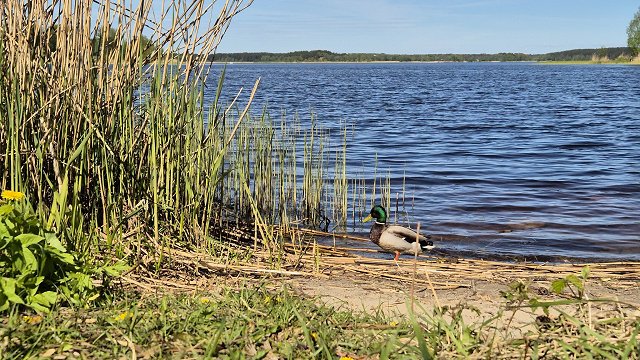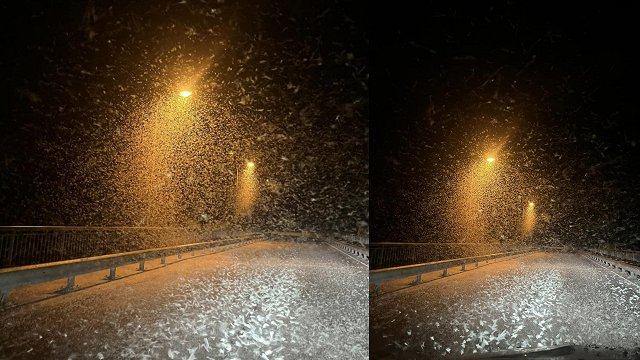Smoke from fires, volcanic emissions, sea salt and pollen can also travel through the air, Iveta Indriksone, head of the Monitoring Department of the Latvian Center for Environment, Geology and Meteorology (LVĢMC), said on the broadcast.
Airborne Saharan sand is not uncommon in the spring, and this year also reached Latvia with people in Rīga even asked to reduce their outdoor activities due to the very poor air quality. People also expressed their concerns on social media, including complaints that cars that were cleaned only the day before were already covered in sand a day later.
"The rise of dust from the Sahara desert in the upper layers of the atmosphere is quite frequent, it happens continuously. It is more pronounced from February to June, and the second pronounced episode is at the end of autumn, the beginning of winter. So there are storms in the desert, and there are so many dust particles raised during the storm that the winds can lift them into the upper atmosphere," Indriksone explained.
Then, through the upper layers of the atmosphere, the dust cloud travels wherever the wind blows it. Mostly, this dust affects the countries of the Mediterranean region, but if the mass of dust and sand is quite large, it can be carried across Central Europe to the Nordic countries.
"Of course, this is not often observed in Latvia. The last episode was in 2021, in the month of February, there were even two episodes then – at the beginning and at the end of February. Both of these episodes did not particularly affect the air pollution situation in Latvia in the ground layer, because the cloud moved very high in the upper in layers," said Indriksone.
This year, unfortunately, the deposition of dust from the cloud moving in the upper layers was more intense, because the amount of dust itself was also much larger. Consequently, it affected the air quality and the sand was also visible on various surfaces on the ground.
Sahara sand or dust is not the only natural source of cross-border pollution that can and does enter Latvia, thus affecting air quality.
There are also wild forest fires – in very intense fires, smoke can also rise into the upper atmosphere and travel further, just like the dust of the Sahara does.
"There was an episode not so long ago, if I'm not mistaken, in 2020, when forests were burning in very large areas in southern Russia and northern Ukraine, and this pollution reached Latvia," said Indriksone.
There are also volcanic eruptions – volcanic emissions also tend to reach the upper layers of the atmosphere and can be transferred to another place, but they are mostly very high in the atmosphere, and we in Latvia do not really notice them.
"Another very interesting group of transboundary natural sources of pollution is sea salt. When the surface of the sea or ocean is intensively undulating, sea aerosol particles are separated and then are lifted by the wind and carried further. When these aerosol particles encounter dust particles, the dust particles begin to stick together and grow in diameter, and then it is already pollution that we have to contend with," explained Indrikson.
Natural pollution also includes pollen, which can be transferred across national borders like human-caused cross-border pollution, such as emissions from transport, industry and agriculture.
"It is difficult to distinguish which source of cross-border pollution is the main one. Mostly we look at the total cross-border pollution as such. There is one station in Rucava in Latvia, whose purpose is to assess how much cross-border pollution enters Latvia. This station has been operating for a very long time, since 1985, and the data line is fantastic. The measurements show that cross-border pollution is decreasing and cannot be compared to what it was in the 70s-80s, but it still exists," Indriksone said.





























